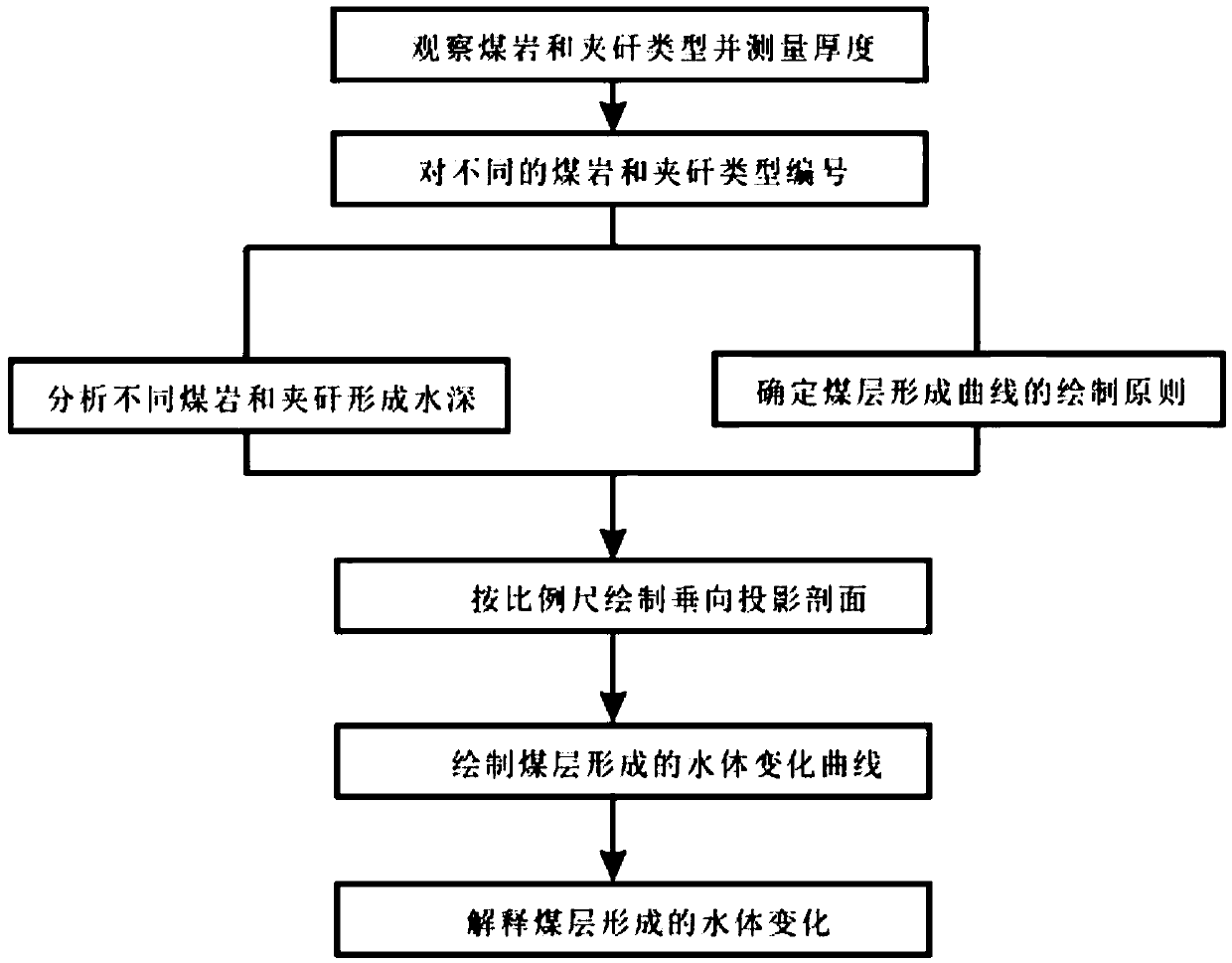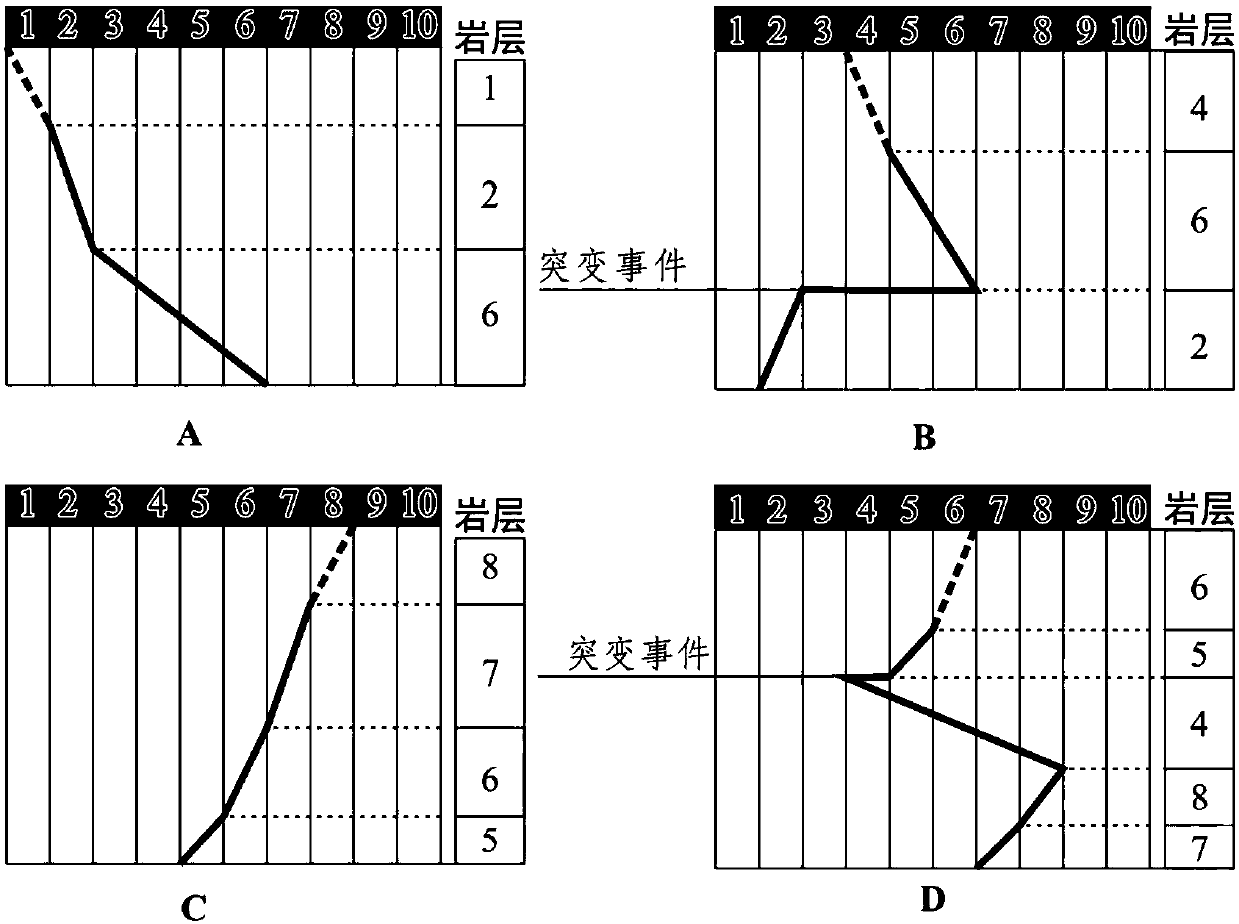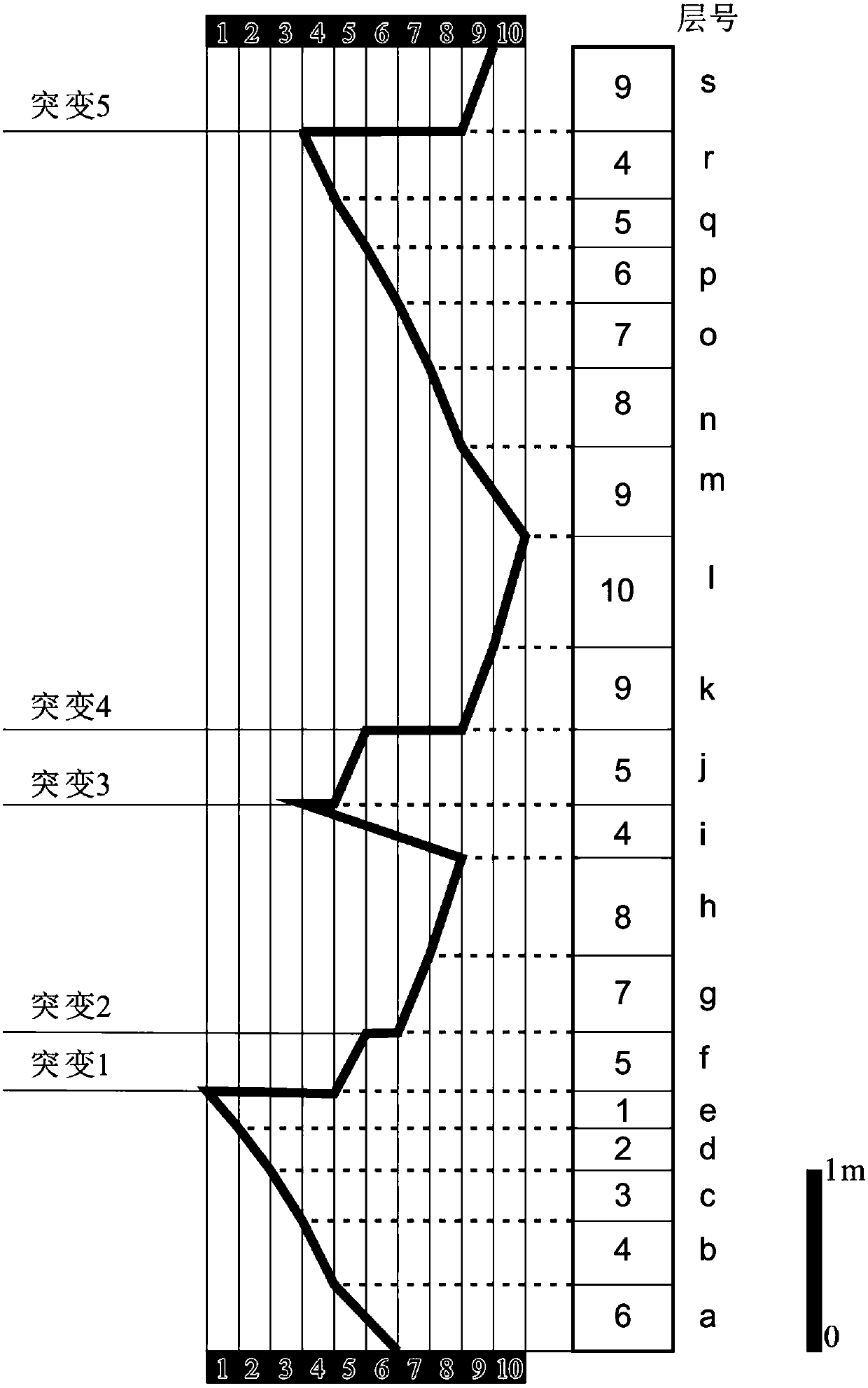A Method for Determining the State of Coal Seam by Water Body Variation Curve
A technology of changing curves and water bodies, applied in the field of coal geological exploration, can solve the problems of not taking into account the tectonic event interface on the region, not taking detailed consideration, etc., to achieve the effects of convenient operation, accurate recovery and analysis, and simple process
- Summary
- Abstract
- Description
- Claims
- Application Information
AI Technical Summary
Problems solved by technology
Method used
Image
Examples
Embodiment 1
[0024] The concrete steps of drawing coal seam formation water body change curve of the present embodiment are:
[0025] (1) Identification of macroscopic coal rock composition and gangue lithology, visual observation of coal rock composition and gangue lithology in underground or boreholes, to determine the macroscopic coal rock composition type from bottom to top in the same coal seam or gangue types, measure and record the layered thickness of different components at the same time;
[0026] (2) Number different macroscopic coal rock components or gangue lithology, form different coal rock types and gangue lithology characteristics according to different water depths, start numbering from the components formed in shallow water, and form in deeper water bodies According to the types of gangue that often appear in coal and the coal geological foundation, 10 kinds of rock or coal rock component numbers are determined, and the numbers 1-10 represent clay rocks respectively. Or ...
Embodiment 2
[0040] In this embodiment, the water body change curve is drawn for the main mining coal seam and its gangue and roof rock section in a certain mining area, and the specific process is as follows:
[0041] (1) Identify and divide the coal seam and the coal rock type and rock strata that are included in the roof and floor according to the underground or drilled rock strata. A total of 19 layers are divided, and the vertical thickness is measured and recorded. The results are shown in Table 3;
[0042] (2) According to the method in Table 2, number the different types of coal rock types (Table 3), on this basis, according to figure 2 Draw the principle, combine the actual stratum thickness and the required scale to draw the base map of the coal formation curve, and draw vertical equidistant parallel lines along the abscissa in 10 types;
[0043] Table 2: Corresponding numbers of different coal rock components or rocks
[0044] Claystone (or Paleosol)
1
mediu...
PUM
 Login to View More
Login to View More Abstract
Description
Claims
Application Information
 Login to View More
Login to View More - R&D
- Intellectual Property
- Life Sciences
- Materials
- Tech Scout
- Unparalleled Data Quality
- Higher Quality Content
- 60% Fewer Hallucinations
Browse by: Latest US Patents, China's latest patents, Technical Efficacy Thesaurus, Application Domain, Technology Topic, Popular Technical Reports.
© 2025 PatSnap. All rights reserved.Legal|Privacy policy|Modern Slavery Act Transparency Statement|Sitemap|About US| Contact US: help@patsnap.com



